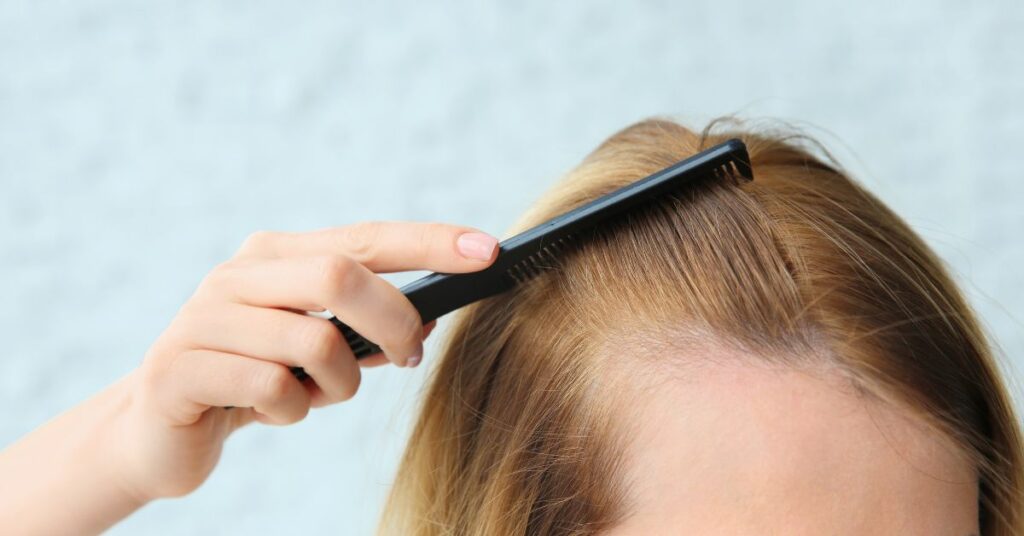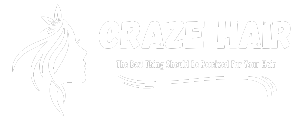
Introduce
Female pattern hair loss, though often misunderstood or overlooked, is a prevalent condition that affects women of various ages worldwide. Characterized by progressive thinning of the hair, it can have significant psychological and emotional effects on those affected. However, there is hope. With advancements in treatment options and a better understanding of the condition, effective management strategies are available. In this article, we will delve into the causes, symptoms, diagnosis, and treatment options for female pattern hair loss, empowering you with the knowledge to take proactive steps towards healthier, fuller hair.
Understanding Female Pattern Hair Loss
Female pattern hair loss (FPHL) is a common condition characterized by the progressive thinning of hair on the scalp in a specific pattern. While it primarily affects the crown and frontal scalp, it can also involve the temples and mid-anterior scalp. Unlike male pattern baldness, which typically presents with receding hairline and bald spots, FPHL often manifests as diffuse thinning of hair without significant hairline recession.
Definition and Causes:
Female pattern hair loss (FPHL) is mainly influenced by genetic and hormonal factors. One significant contributor is the hormone dihydrotestosterone (DHT), formed from testosterone by the enzyme 5-alpha reductase. DHT attaches to hair follicles, causing them to shrink gradually. This phenomenon, called miniaturization, leads to increasingly finer and shorter hair growth cycles, ultimately resulting in noticeable thinning.
Genetic predisposition plays a crucial role in FPHL, with inheritance patterns suggesting a polygenic mode of transmission. Women with a family history of FPHL are more likely to develop the condition themselves. Additionally, hormonal imbalances, such as fluctuations in estrogen and androgen levels, can contribute to the onset and progression of FPHL. Other potential triggers include stress, thyroid disorders, and certain medications.
Prevalence and Demographics:
FPHL is more common than often perceived, affecting up to 40% of women by the age of 50. While it can occur at any age, it is most prevalent in postmenopausal women. However, it can also manifest in younger women, especially those with a family history of the condition or hormonal disturbances. The psychological impact of FPHL can be significant, leading to decreased self-esteem, anxiety, and depression.

Psychological Impact:
The psychological toll of FPHL should not be underestimated. For many women, hair is not just a physical attribute but a symbol of femininity, beauty, and identity. As such, experiencing hair loss can evoke feelings of distress, embarrassment, and loss of confidence. Coping with FPHL often involves navigating societal expectations and perceptions of beauty while striving to maintain a positive self-image.
Recognizing Symptoms and Patterns
Recognizing the early symptoms and patterns of female pattern hair loss (FPHL) is crucial for timely intervention and effective management. While FPHL shares some similarities with other types of hair loss, such as telogen effluvium and alopecia areata, there are specific characteristics that distinguish it.
Identifying Early Signs:
One of the earliest signs of FPHL is a widening part line or diffuse thinning of hair on the crown of the scalp. Unlike other types of hair loss, such as alopecia areata, FPHL typically does not cause bald patches or complete hair loss. Instead, hair thinning occurs gradually and symmetrically, often starting at the central part of the scalp and spreading outward.
Differentiating from Other Types of Hair Loss:
While FPHL shares similarities with other types of hair loss, several key differences can aid in its differentiation. Unlike telogen effluvium, which is often triggered by stress, illness, or hormonal changes, FPHL is a chronic, progressive condition with a genetic basis. Additionally, FPHL differs from alopecia areata, an autoimmune disorder characterized by sudden, patchy hair loss, as it involves gradual thinning of hair without significant inflammation or hair follicle damage.
Pattern Classification (Norwood-Hamilton Scale):
Dermatologists often employ the Norwood-Hamilton scale to standardize the assessment and classification of female pattern hair loss (FPHL). Originally designed for male pattern baldness, this scale categorizes hair loss patterns into various stages, ranging from minimal hair loss (Stage I) to extensive balding (Stage VII). Despite its initial development for male pattern baldness, the Norwood-Hamilton scale can be adapted for FPHL, providing a standardized framework to evaluate the severity and progression of hair loss.
Diagnosis and Evaluation
Diagnosing female pattern hair loss (FPHL) involves a comprehensive evaluation of medical history, physical examination, and diagnostic tests to confirm the presence of FPHL and rule out other potential causes of hair loss.
Medical History and Physical Examination:
During the initial consultation, healthcare providers will inquire about the patient’s medical history, including any family history of hair loss, underlying medical conditions, medication use, and recent life events or stressors. This information helps identify potential triggers or contributing factors to the hair loss.
A thorough physical examination of the scalp is essential to assess the extent and pattern of hair thinning. Healthcare providers may use a magnifying tool, such as a dermatoscope, to examine the scalp and hair follicles more closely. They will also evaluate the quality and distribution of hair, looking for signs of miniaturization, inflammation, or scalp conditions that may mimic FPHL.
Scalp Examination and Hair Analysis:
Scalp examination plays a crucial role in diagnosing FPHL. Dermatologists may perform a pull test to assess hair shedding and traction on the scalp. They may also examine the scalp for signs of inflammation, scaling, or follicular abnormalities that may indicate an underlying scalp disorder or infection.
Hair analysis, including hair pull tests and hair density measurements, can provide additional insights into the severity and progression of FPHL. Dermatologists may use specialized tools, such as a hair densitometer, to quantify hair loss and monitor changes over time.
Diagnostic Tests:
While the diagnosis of FPHL is primarily clinical, dermatologists may order additional diagnostic tests to confirm the diagnosis and rule out other potential causes of hair loss. Blood tests may be conducted to evaluate hormone levels (e.g., testosterone, thyroid hormones) and assess for underlying medical conditions, such as thyroid disorders or hormonal imbalances.
In some cases, a scalp biopsy may be performed to examine the hair follicles and surrounding tissue under a microscope. This can help differentiate FPHL from other types of hair loss and identify any underlying scalp conditions or inflammatory processes.
Treatment Options Overview
Effective management of female pattern hair loss (FPHL) often involves a multifaceted approach that may include medications, topical treatments, and surgical interventions. Understanding the available treatment options is essential for individuals seeking to address FPHL and promote hair regrowth.
Medications:
- Minoxidil (Rogaine): Minoxidil is a topical medication applied directly to the scalp that promotes hair regrowth by stimulating hair follicles and prolonging the hair growth cycle. It is available over-the-counter in various formulations, including foam and solution. Minoxidil is typically applied twice daily and may take several months to produce visible results.
- Finasteride (Propecia): Finasteride is an oral medication that inhibits the enzyme 5-alpha reductase, thereby reducing the conversion of testosterone to dihydrotestosterone (DHT). By blocking DHT production, finasteride helps prevent further hair loss and may promote hair regrowth in some individuals. It is primarily used in men with male pattern baldness but may also be prescribed off-label for women with FPHL.
Topical Treatments and Procedures:
- Low-Level Laser Therapy (LLLT): LLLT involves the use of low-level laser devices to stimulate hair follicles and improve hair growth. It is believed to boost blood flow to the scalp and improve cellular metabolism, resulting in thicker, healthier hair. Low-level laser therapy (LLLT) devices are available for home use or may be administered in a clinical setting.
- Platelet-Rich Plasma (PRP) Therapy: PRP therapy involves the injection of platelet-rich plasma derived from the patient’s own blood into the scalp. Platelets contain growth factors that promote tissue repair and stimulate hair follicle regeneration. PRP therapy is believed to enhance hair growth and improve hair density in individuals with FPHL.
Surgical Interventions:
- Hair Transplantation: Hair transplantation is a surgical procedure that involves harvesting hair follicles from donor areas (typically the back or sides of the scalp) and implanting them into thinning or balding areas. This technique allows for the redistribution of healthy, genetically resistant hair follicles to areas of hair loss, resulting in natural-looking hair regrowth.
- Scalp Reduction: Scalp reduction is a surgical procedure utilized to diminish the size of balding areas on the scalp by eliminating excess scalp tissue and tightening the surrounding skin. This technique is less frequently performed nowadays due to the accessibility of more advanced hair restoration procedures, such as hair transplantation.
Medications for Female Pattern Hair Loss
Medications play a significant role in the management of female pattern hair loss (FPHL), offering options for both prevention of further hair loss and promotion of hair regrowth. While the efficacy of these medications may vary from person to person, understanding their mechanisms of action and potential side effects is essential for informed decision-making.
1. Minoxidil (Rogaine):
Mechanism of Action: Minoxidil is a vasodilator that works by increasing blood flow to the scalp and stimulating hair follicles’ growth phase (anagen phase). It may also prolong the duration of the anagen phase, resulting in thicker, longer-lasting hair growth.
Application: Minoxidil is available in various formulations, including 2% and 5% solutions and 5% foam. It is applied directly to the scalp once or twice daily, depending on the product’s concentration and instructions.
Efficacy: Clinical studies have shown that minoxidil can effectively slow down hair loss and promote hair regrowth in women with FPHL. However, results may vary, and it may take several months of consistent use to see visible improvements in hair density and thickness.
Side Effects: Common side effects of minoxidil include scalp irritation, itching, and dryness. Some individuals may also experience increased hair shedding initially, known as “shedding phase,” which typically resolves within a few weeks of continued use.
2. Finasteride (Propecia):
Mechanism of Action: Finasteride is a 5-alpha reductase inhibitor that blocks the conversion of testosterone to dihydrotestosterone (DHT), a hormone implicated in the miniaturization of hair follicles in FPHL. By reducing DHT levels, finasteride helps prevent further hair loss and may promote hair regrowth in some individuals.
Usage: Finasteride is primarily prescribed for men with male pattern baldness, but it may also be used off-label for women with FPHL. It is available in tablet form for oral administration, typically taken once daily.
Efficacy: While finasteride has demonstrated effectiveness in reducing hair loss and stimulating hair regrowth in men with male pattern baldness, its efficacy in women with FPHL is uncertain. Research examining the use of finasteride in women has produced conflicting findings, and it may not be suitable for all women due to potential hormonal side effects.
Side Effects: Common side effects of finasteride in women may include decreased libido, breast tenderness, and menstrual irregularities. Due to its potential teratogenic effects, finasteride should not be used during pregnancy or by women who are planning to conceive.
Other Medications:
]Apart from minoxidil and finasteride, dermatologists may prescribe other medications off-label for treating FPHL. These include spironolactone (an antiandrogen), oral contraceptives (containing estrogen and progestin), and topical corticosteroids. However, the evidence supporting their effectiveness in treating FPHL is limited, and they may not be suitable for everyone

Conclusion
In conclusion, female pattern hair loss (FPHL) is a common condition that can have significant emotional and psychological impacts on affected individuals. However, with advancements in treatment options and a better understanding of the underlying causes, there is hope for effective management and restoration of hair growth. From medications like minoxidil and finasteride to topical treatments like low-level laser therapy and platelet-rich plasma therapy, there are various options available to address FPHL.
Additionally, surgical interventions such as hair transplantation offer long-term solutions for those seeking more permanent results. By working closely with healthcare providers and adopting personalized treatment plans tailored to individual needs and preferences, individuals with FPHL can take proactive steps towards healthier, fuller hair and improved self-confidence. It’s essential to approach FPHL with patience and persistence, as results may vary, and it may take time to see visible improvements. Ultimately, with the right support and guidance, managing FPHL is achievable, empowering individuals to embrace their natural beauty and feel confident in their appearance.read more
FAQs about Female Pattern Hair Loss (FPHL) and its Treatment:
Q: What is female pattern hair loss (FPHL)?
A: Female pattern hair loss, also known as androgenetic alopecia, is a common condition characterized by progressive thinning of hair on the scalp in a specific pattern. It primarily affects the crown and frontal scalp, leading to a reduction in hair density and volume over time.
Q: What causes FPHL?
A: FPHL is primarily driven by genetic and hormonal factors. It is believed to be influenced by the hormone dihydrotestosterone (DHT), which binds to hair follicles and causes them to shrink over time. Genetic predisposition and hormonal imbalances play significant roles in the development and progression of FPHL.
Q: How common is FPHL?
A: FPHL is more common than often perceived, affecting up to 40% of women by the age of 50. While it is most prevalent in postmenopausal women, it can also occur in younger women, especially those with a family history of the condition or hormonal disturbances.
Q: What are the treatment options for FPHL?
A: Treatment options for FPHL include medications like minoxidil and finasteride, which can help prevent further hair loss and promote hair regrowth. Additionally, topical treatments such as low-level laser therapy and platelet-rich plasma therapy, as well as surgical interventions like hair transplantation, may be considered for more significant hair restoration.
Q: How long does it take to see results from FPHL treatment?
A: The timeline for seeing results from FPHL treatment varies depending on the individual and the chosen treatment option. With medications like minoxidil and finasteride, it may take several months of consistent use to notice visible improvements in hair density and thickness. Surgical interventions like hair transplantation may require longer recovery periods, with noticeable results typically seen within six to twelve months post-procedure.
Q: Are there any side effects associated with FPHL treatment?
A: Common side effects of FPHL treatment may include scalp irritation, itching, and dryness with topical medications like minoxidil. Oral medications like finasteride may cause hormonal side effects such as decreased libido and menstrual irregularities, particularly in women. It’s essential to discuss potential side effects with a healthcare provider before starting any treatment.
Q: Can FPHL be cured?
A: While there is no cure for FPHL, effective management strategies are available to help slow down hair loss, promote hair regrowth, and improve overall scalp health. With appropriate treatment and ongoing maintenance, individuals with FPHL can achieve significant improvements in hair density and thickness, enhancing their confidence and quality of life.

